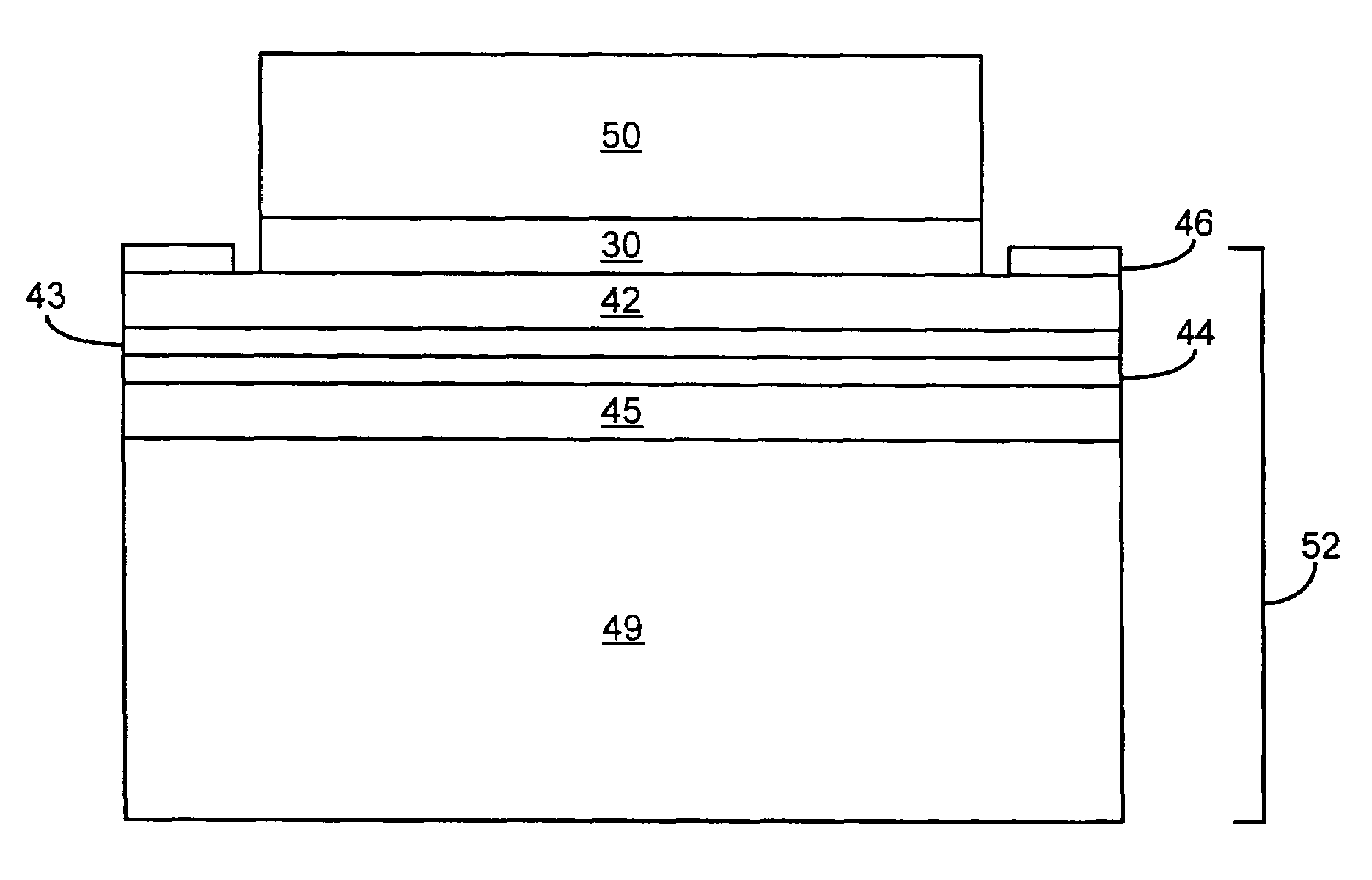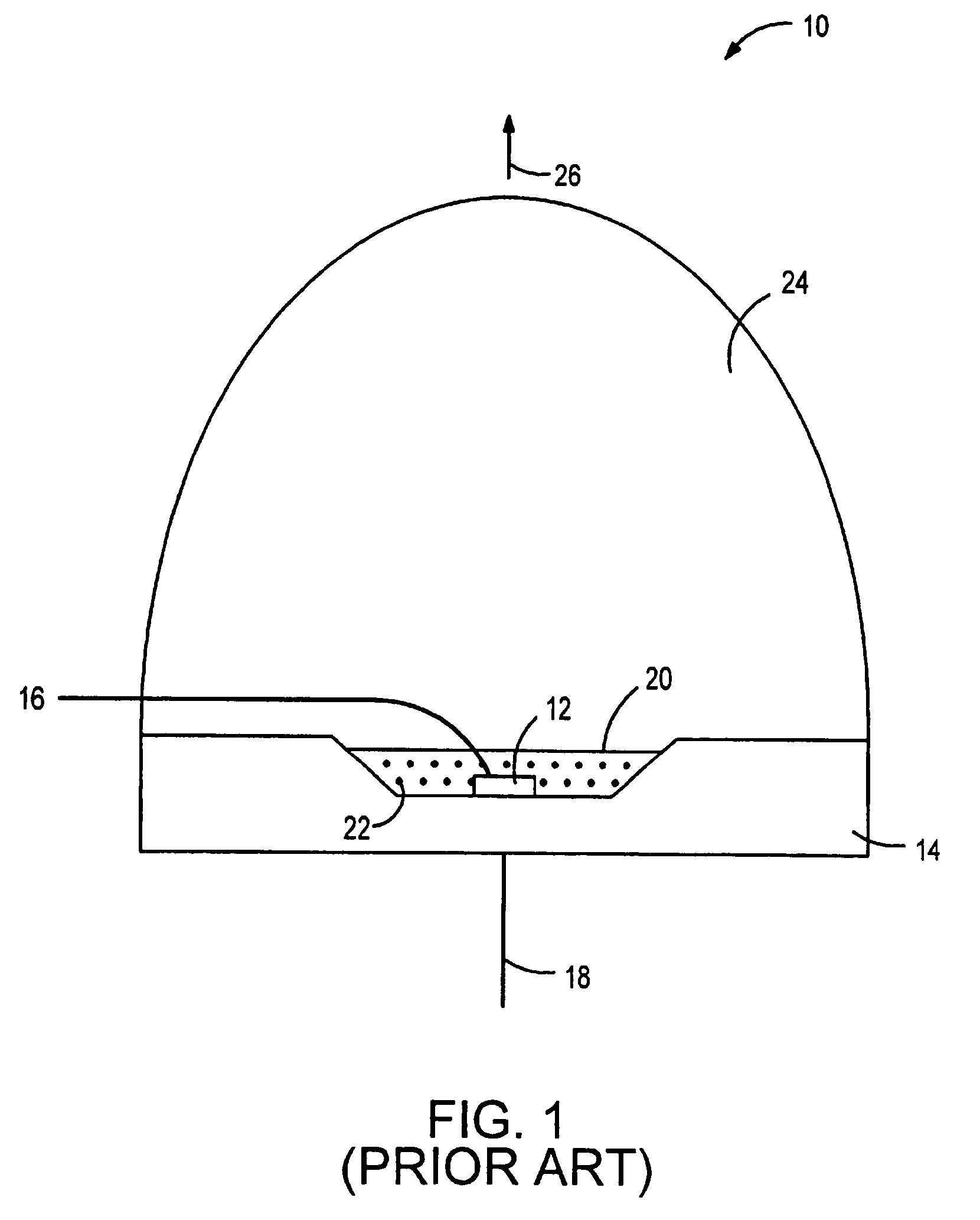Luminescent ceramic for a light emitting device
a technology of light-emitting devices and luminescent ceramics, which is applied in the direction of solid-state devices, discharge tubes/lamp details, x-ray tubes, etc., can solve the problems of reducing the light extraction efficiency of the device, undesired alteration of the appearance of the light emitted from the device, and using organic encapsulants, etc., to achieve less scattering, less sensitive to temperature, and increase conversion efficiency
- Summary
- Abstract
- Description
- Claims
- Application Information
AI Technical Summary
Benefits of technology
Problems solved by technology
Method used
Image
Examples
example
[0035]An example of a cerium-doped yttrium aluminum garnet ceramic slab diffusion-bonded to a sapphire substrate is given below.
[0036]Diffusion-bonded YAG-sapphire composites are advantageous because of their high mechanical strength and excellent optical quality. According to the phase diagram yttria-alumina within the composition range Al2O3 and 3Y2O35Al2O3, no other phase exists except an eutecticum with 33% Al. Therefore, a sinterbonded YAG-sapphire composite has an average refractive index at the (eutectoidic) interface between YAG ceramic (ni=1.84) and sapphire substrate (ni=1.76) and thus a high quality optical contact can be obtained. In addition, because of the similar expansion coefficients of YAG and sapphire (YAG: 6.9×10−6 K−1, Al2O3:8.6×10−6 K−1), sinterbonded wafers with low mechanical stress can be produced.
[0037]A diffusion-bonded YAG:Ce ceramic-sapphire wafer may be formed as follows:
[0038]a) Production of YAG:Ce ceramic: 40 g Y2O3 (99.998%), 32 g Al2O3 (99.999%), a...
PUM
| Property | Measurement | Unit |
|---|---|---|
| temperatures | aaaaa | aaaaa |
| refractive indices | aaaaa | aaaaa |
| diameter | aaaaa | aaaaa |
Abstract
Description
Claims
Application Information
 Login to View More
Login to View More - R&D
- Intellectual Property
- Life Sciences
- Materials
- Tech Scout
- Unparalleled Data Quality
- Higher Quality Content
- 60% Fewer Hallucinations
Browse by: Latest US Patents, China's latest patents, Technical Efficacy Thesaurus, Application Domain, Technology Topic, Popular Technical Reports.
© 2025 PatSnap. All rights reserved.Legal|Privacy policy|Modern Slavery Act Transparency Statement|Sitemap|About US| Contact US: help@patsnap.com



